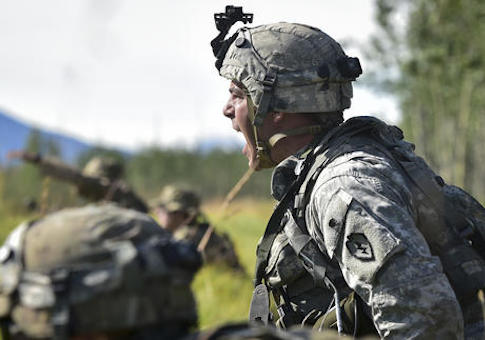U.S. Army soldiers training for future operations have not been able to take full advantage of virtual training devices, a key part of the service’s preparations for the next generation battlefield.
The Army has not fully integrated virtual training devices into operational training, which has prevented soldiers from getting the most out of these technologies, according to a report issued by the Government Accountability Office after a year-long audit.
The Army has focused for years on training soldiers to support counterinsurgency operations in the Middle East, but an increasingly complex security environment has pushed the service to broaden its training to prepare soldiers for the battlefield.
The Pentagon began overhauling its training priorities in 2010 to prepare for the next generation of military operations, pledging to incorporate virtual training methods like simulators and computer-generated battlefields.
The Defense Department’s strategic plan for next-generation training, issued in September 2010, highlighted the need to alter training strategies to prepare for future conflicts. The directive called for an "immersive training environment" that would "synchronize live and virtual training operations" and "support full-spectrum operations to include: information, cyberspace, nuclear, missile defense, and space."
The Army uses these technologies to educate soldiers in tactics and techniques ahead of live training and replicate conditions that live training cannot.
The Army has used technologies such as the Dismounted Soldier Training System, a fully-immersive virtual simulation system, and the Engagement Skills Trainer, which offers simulated marksmanship and combat training, to prepare its soldiers for combat operations.
However, GAO auditors found that several factors have limited soldiers’ use of virtual training devices, including the Army’s failure to fully incorporate virtual devices into training programs and train officials about how to use the devices. Interviews with unit officials across several brigade combat teams found that soldiers limited virtual training due to time constraints.
"The unit officials we met with agreed that time constraints limited their ability to fully leverage virtual training devices," the report explained. "For example, some unit officials stated that they have forgone virtual training to focus their unit’s limited time on training in a live environment."
Interviews revealed that officials in several units "had received little formal training on virtual training devices or did not feel fully knowledgeable in how to use them in their units’ training."
The GAO faulted the Army for not developing and assessing the virtual devices it has fielded for training. The Army’s process for developing virtual training devices does not take into account the time soldiers will be able to train with them, according to the audit. The Army also does not identify how long soldiers would need to train with devices to become proficient in their use.
The Army does not have a well-defined process to determine the effectiveness of virtual training devices, the GAO found. Of nine virtual devices reviewed by auditors, seven had not been analyzed for effectiveness in training after being fielded and the Army had no plans to review them.
The Army spent $29.6 million to sustain the nine devices reviewed by auditors in its inventory in fiscal 2015, though interviews with officials revealed that one of the devices sits largely unused and two serve identical purposes.
"Without a well-defined process for the conduct of post-fielding training effectiveness analyses the Army risks continued funding of devices whose value to operational training is undetermined," auditors wrote.
Congress mandated the GAO to review the Army’s virtual training capabilities. The Army has been faulted in previous audits for not collecting information to figure out how best to mix live training with simulations, and for not ensuring the cost-effectiveness of virtual training devices.
A 2014 probe by the Army Audit Agency determined that the use of virtual devices in operational training was low across the entire service.
